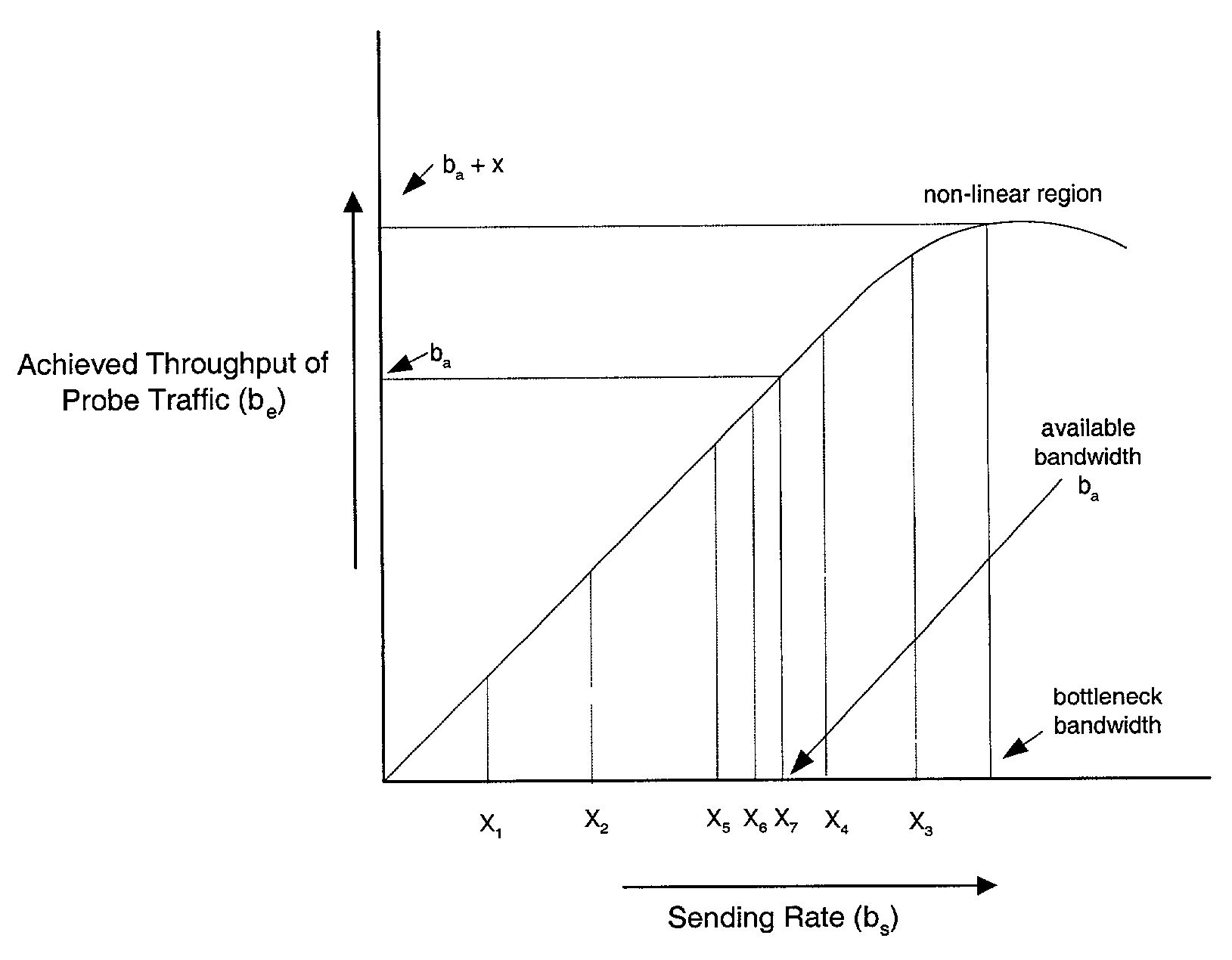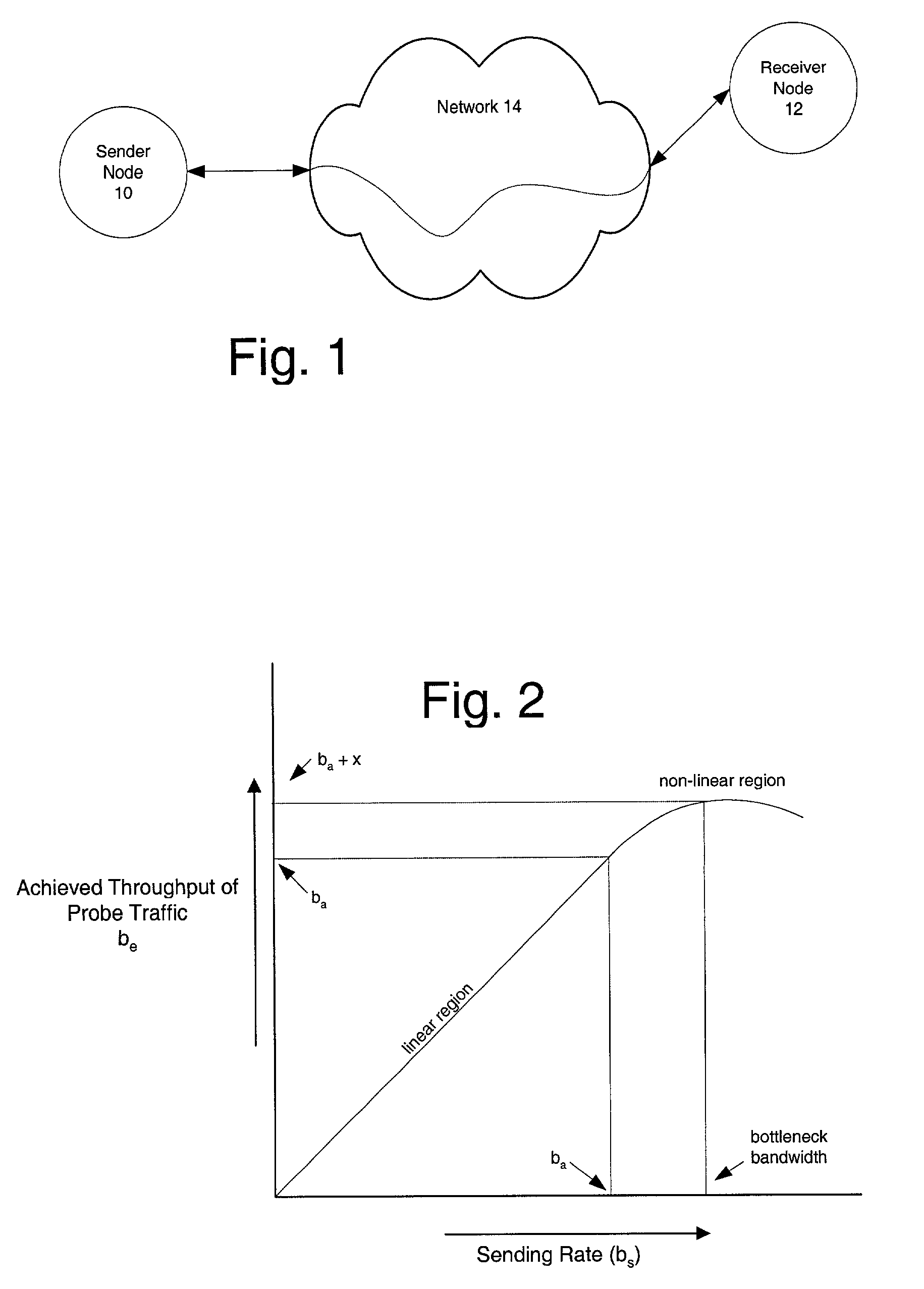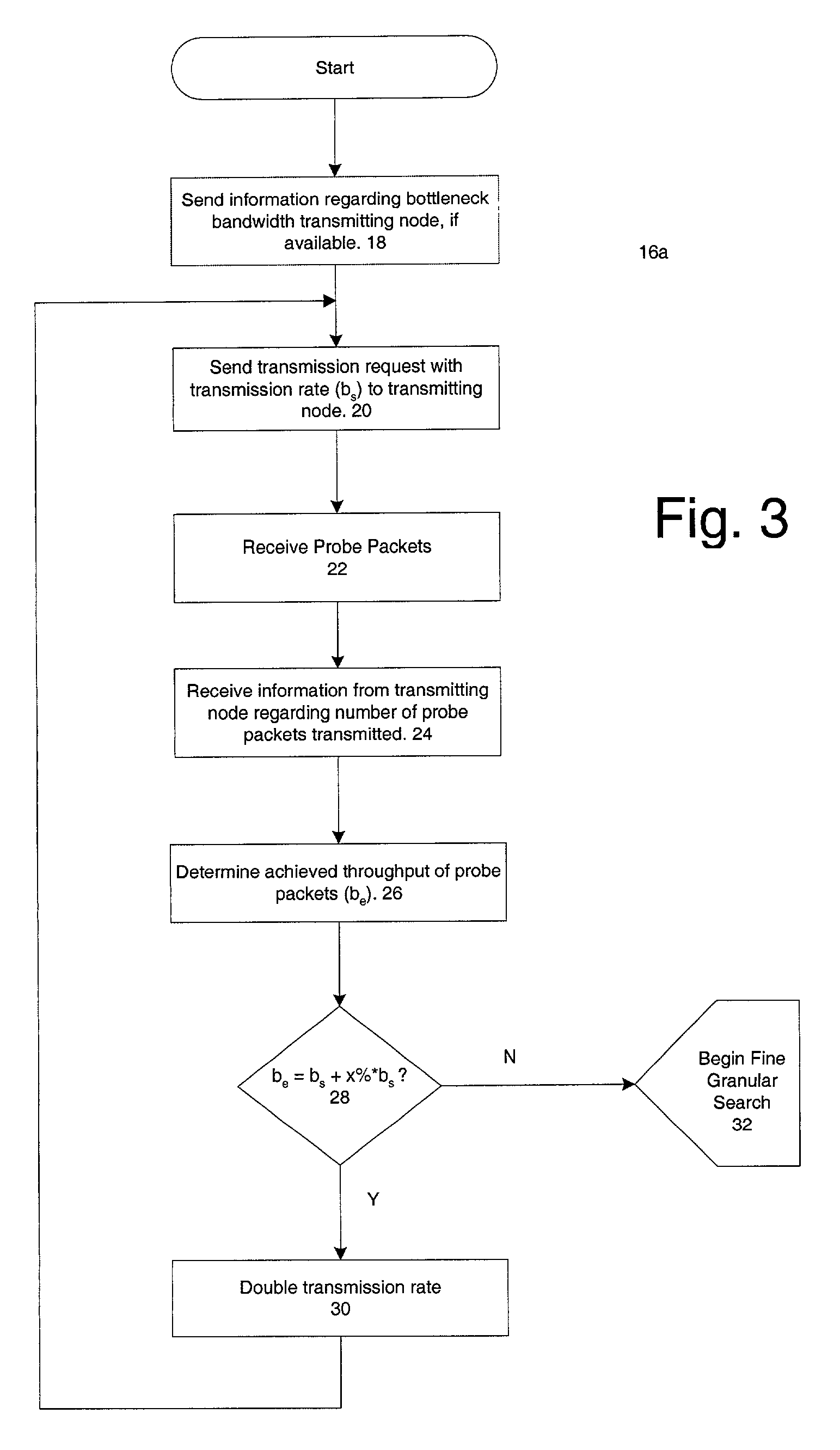Tool for measuring available bandwidth in computer networks
a computer network and bandwidth technology, applied in the field of methodology for estimating available bandwidth, can solve the problems of increasing the path length of the path, the efficacy of such methods for estimating link bandwidth decreases with increasing path length, and the difficulty of devising the correct method to detect the bottleneck bandwidth
- Summary
- Abstract
- Description
- Claims
- Application Information
AI Technical Summary
Benefits of technology
Problems solved by technology
Method used
Image
Examples
Embodiment Construction
[0057]Described herein is a scheme for finding the available bandwidth along any communication path between two end points on a computer network or internetwork such as the Internet. The present process makes use of a probing process wherein probe packages (made of up one or more packets) are transmitted between the end points of interest at varying transmission rates. The algorithm which defines the probing process can either run at the two end points, called the sender and receiver nodes, or can be run only at the sender. The sender sends packets to the receiver at increasing rates and adapts to the network conditions while searching for the point (i.e., the probe packet transmission rate) at which the probe packets start creating congestion within the communication path. That point of operation, where an increased rate of probing starts producing congestion, will give an estimate of the maximum available bandwidth for the communication path under current network conditions. Based...
PUM
 Login to View More
Login to View More Abstract
Description
Claims
Application Information
 Login to View More
Login to View More - R&D
- Intellectual Property
- Life Sciences
- Materials
- Tech Scout
- Unparalleled Data Quality
- Higher Quality Content
- 60% Fewer Hallucinations
Browse by: Latest US Patents, China's latest patents, Technical Efficacy Thesaurus, Application Domain, Technology Topic, Popular Technical Reports.
© 2025 PatSnap. All rights reserved.Legal|Privacy policy|Modern Slavery Act Transparency Statement|Sitemap|About US| Contact US: help@patsnap.com



